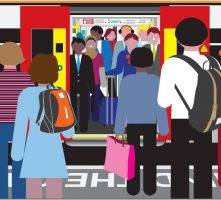September 3, 2016
Office of future + Commuting and wellbeing + Air quality 0
 In this week’s Newsletter; Mark Eltringham describes what Lewis Carroll can teach us about the office of the future; we learn of the personality differences between iPhone and Android smartphone users; and disturbing news from Australia on a growing culture of presenteeism. BSRIA releases a new topic guide on indoor air quality (IAQ); a new report claims a direct link between lack of sleep and lower workplace productivity; and how fewer distractions make home the preferred place for maximum productivity. The average UK commuter adds almost 800 calories to their diet every week; staff want a more human experience at work and the Institute for Employment Studies, aims to track the effects of the UK’s vote to leave the EU. Download our new Briefing, produced in partnership with Boss Design on the link between culture and workplace strategy and design; visit our new events page, follow us on Twitter and join our LinkedIn Group to discuss these and other stories.
In this week’s Newsletter; Mark Eltringham describes what Lewis Carroll can teach us about the office of the future; we learn of the personality differences between iPhone and Android smartphone users; and disturbing news from Australia on a growing culture of presenteeism. BSRIA releases a new topic guide on indoor air quality (IAQ); a new report claims a direct link between lack of sleep and lower workplace productivity; and how fewer distractions make home the preferred place for maximum productivity. The average UK commuter adds almost 800 calories to their diet every week; staff want a more human experience at work and the Institute for Employment Studies, aims to track the effects of the UK’s vote to leave the EU. Download our new Briefing, produced in partnership with Boss Design on the link between culture and workplace strategy and design; visit our new events page, follow us on Twitter and join our LinkedIn Group to discuss these and other stories.

































August 31, 2016
Addressing the five negative influences on organisational culture 0
by Matias Rodsevich • Comment, Flexible working, Knowledge, Workplace
(more…)